
The Isle of Man Steam Packet Company Limited is the oldest continuously operating passenger shipping company in the world, celebrating its 190th anniversary in 2020.
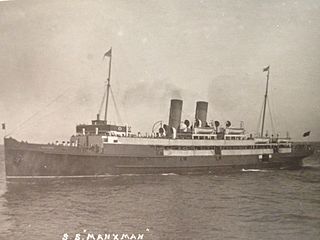
TSS Manxman was a turbine steamer launched in 1904 for the Midland Railway and operated between Heysham and Douglas, Isle of Man. In 1916, she was commissioned by the Royal Navy as HMS Manxman and saw action as a seaplane carrier during the First World War, after which she was acquired by the Isle of Man Steam Packet Company. On the outbreak of the Second World War she was again requisitioned as a troop ship, until she was commissioned and her name changed to HMS Caduceus. She never returned to Manx waters, and was scrapped in August 1949.
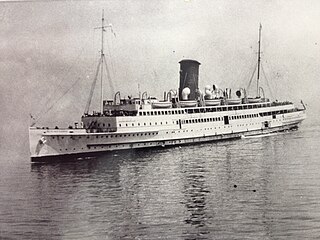
TSS (RMS) Ben-my-Chree (IV) No. 145304 – the fourth vessel in the company's history to be so named – was a passenger ferry operated by the Isle of Man Steam Packet Company between 1927 and 1965.
TSS Duke of Albany was a passenger vessel operated by the London and North Western Railway and the Lancashire and Yorkshire Railway from 1907 to 1914. and also as HMS Duke of Albany from 1914 to 1916.

TSS Duke of Clarence was a passenger vessel operated jointly by the London and North Western Railway and the Lancashire and Yorkshire Railway (LYR) from 1892 between Fleetwood and northern Irish ports. In 1906 the LYR bought her outright and transferred her to their summer service from Hull to Zeebrugge, returning to the Irish Sea in winter. During the First World War Duke of Clarence served as an armed boarding steamer. She resumed passenger service in 1920, passing through changes of ownership in the reorganisations of Britain's railway companies in the 1920s, until she was scrapped in 1930.
TSS Duke of Connaught was a passenger vessel operated jointly by the London and North Western Railway and the Lancashire and Yorkshire Railway from 1902 to 1922. In the LYR-LNWR naming system, she was named for Prince Arthur, Duke of Connaught and Strathearn (1850-1942), a younger son of Queen Victoria and Prince Albert.
PS Tredagh was a paddle steamer passenger vessel operated by the Drogheda Steam Packet Company from 1876 to 1902 and the Lancashire and Yorkshire Railway from 1902 to 1912.
PS Iverna was a paddle steamer passenger vessel operated by the Drogheda Steam Packet Company from 1895 to 1902 and the Lancashire and Yorkshire Railway from 1902 to 1912.
PS Kathleen Mavourneen was a paddle steamer passenger vessel operated by the Drogheda Steam Packet Company from 1855 to 1902 and the Lancashire and Yorkshire Railway from 1902 to 1903.
TSS Colleen Bawn was a twin screw passenger steamship operated by the Lancashire and Yorkshire Railway from 1903 to 1922.
TSS Mellifont was a twin screw passenger steamship operated by the Lancashire and Yorkshire Railway from 1903 to 1928.
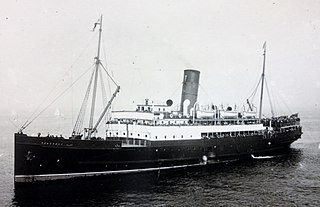
RMS Snaefell (III) – the third ship in the line's history to be so named – was a packet steamer operated by the Isle of Man Steam Packet Company from 1910 to 1914. She was then acquired by the Admiralty at the outbreak of the First World War, until she was torpedoed and sunk in the Mediterranean on 5 June 1918.
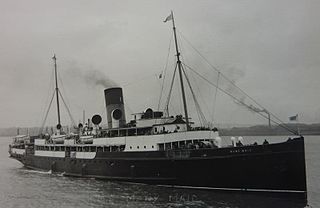
TSS (RMS) Manx Maid (I) No. 131765 - the first ship in the Company's history to be so named - was a packet steamer which was bought by the Isle of Man Steam Packet Company from the London and Southwestern Railway Company, and commenced service with the Steam Packet in 1923.

TSS (RMS) King Orry (III) – the third ship in the history of the Company to bear the name – was a passenger steamer which served with the Isle of Man Steam Packet Company, until she was sunk during the evacuation of Dunkirk in 1940.
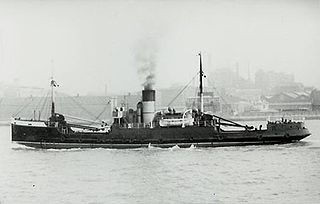
SS (RMS) Peveril (II) was a steel, single-screw cargo vessel, built by Cammell Laird at Birkenhead in 1929, and operated by the Isle of Man Steam Packet Company until 1964.

TSS Ramsey Town was a packet steamer which was initially ordered and operated by the Midland Railway Company under the name Antrim until it was acquired by the Isle of Man Steam Packet Company in 1928.

SS (RMS) Mona (III), the third ship of the Company to bear the name, was a steel paddle-steamer which was originally owned and operated by the London, Chatham and Dover Railway Company, who then sold her to the Liverpool and Douglas Steamship Company, from whose liquidators she was acquired by the Isle of Man Steam Packet Company in 1903.

The passenger steamer SS Peel Castle was operated by the Isle of Man Steam Packet Company from her purchase in 1912 until she was sold for breaking in 1939.
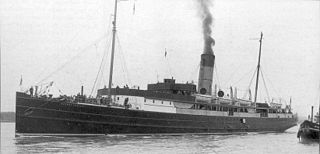
The packet steamer SS Rushen Castle was operated by the Isle of Man Steam Packet Company from her purchase in 1928 until she was sold for breaking in 1947.
The Lancashire and Yorkshire Railway (L&YR) had the largest fleet of all the pre-grouping railway companies. In 1902 the assets of the Drogheda Steam Packet Company were acquired for the sum of £80,000. In 1905 they took over the Goole Steam Shipping Company. By 1913 they owned 26 vessels, with another two under construction, plus a further five under joint ownership with the London and North Western Railway. The L&YR ran steamers between Liverpool and Drogheda, Hull and Zeebrugge, and between Goole and many continental ports including Amsterdam, Copenhagen, Hamburg, and Rotterdam. The jointly owned vessels provided services between Fleetwood, Belfast and Derry.
















